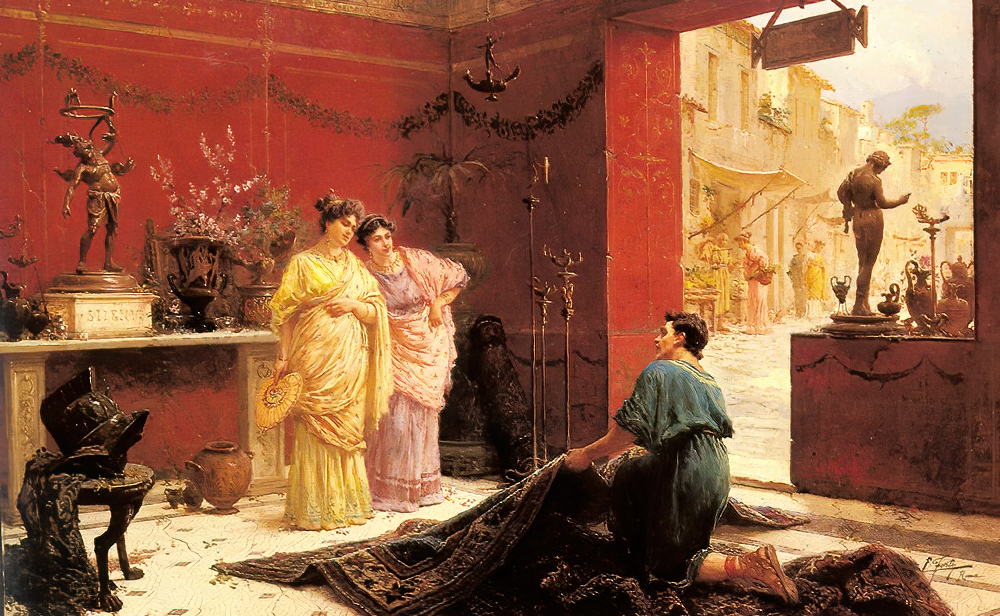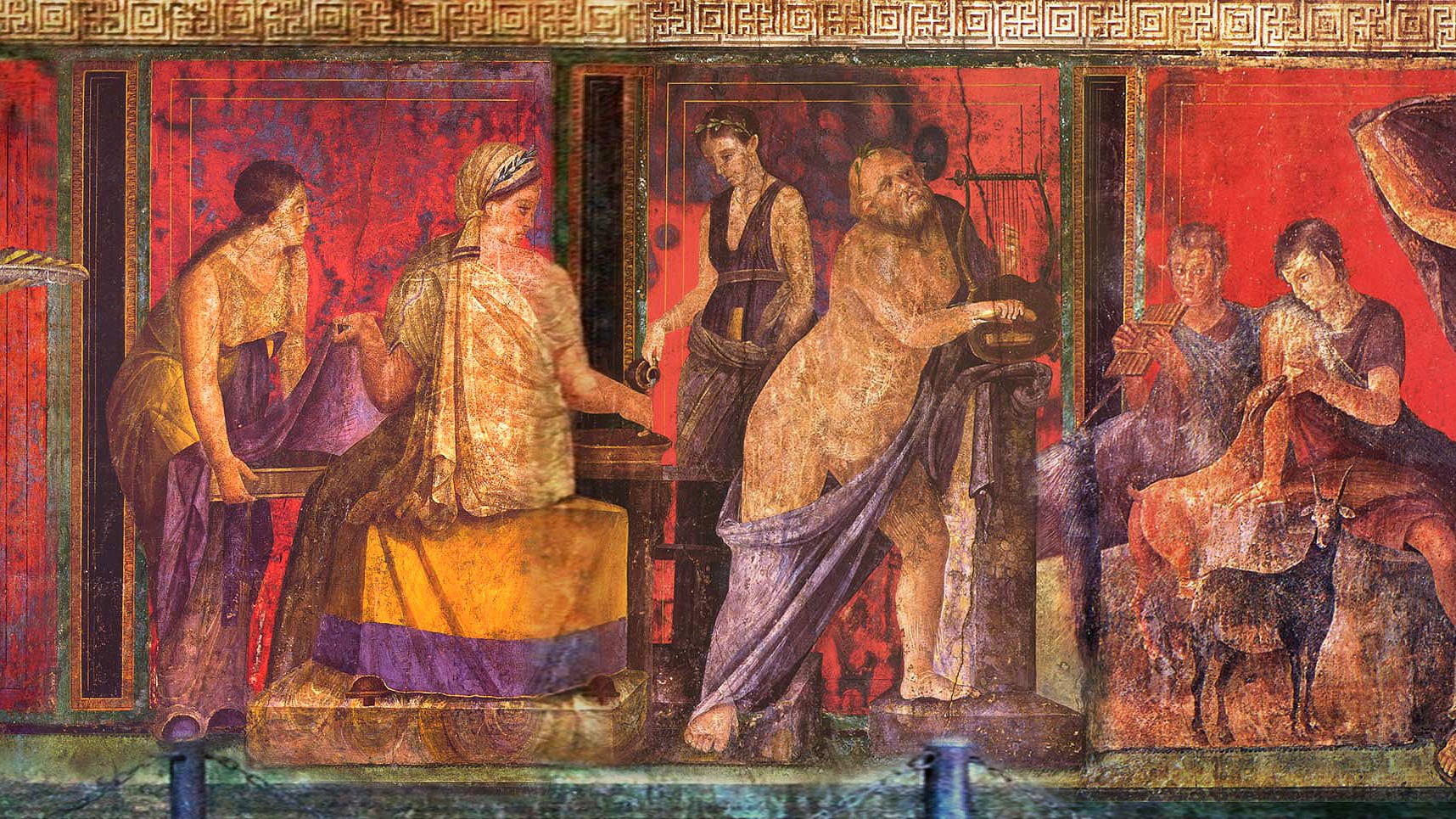The foul and the fragrant: what did the past smell like?

- In the not-so-distant past, most American and European cities reeked of death, decay, and waste.
- However, these are just some of the many smells, both foul and fragrant, that helped determine the course of history.
- From Roman funerals to Aztec chewing gum, the historic role of smell was much more important than we realize.
Many people dream of traveling through time. However, when you think about it, there are a multitude of reasons why you would not want to be a time traveler. Fear of being persecuted by ignorant and intolerant civilizations past — whether for your race, religion, physical disability, or sexual orientation — is one of them. As is the absence of modern medicine, which today can neutralize diseases that, in previous centuries, took the lives of millions.
Another compelling reason is the inescapable stench that one would have to deal with. Historical films, drenched in showbiz glamor, have painted a particularly misleading picture of the past. While cinema cannot convey scent, it can still trick modern audiences into thinking that history smelled as exotic and inviting as Hollywood directors from Cecil B. Demille to David Lowery made it out to look.
The reality could not have been more different. As Connie Chiang, a professor of history and environmental studies, points out in “The Nose Knows: The Sense of Smell in American History,” most 19th century cities smelled like a combination of raw sewage, horse manure, piles of uncollected garbage baking in the sun, and, last but not least, the “odorous slaughtering and processing of animals” that many Gilded Age factories engaged in.
Melanie Kiechle, historian and author of Smell Detectives: An Olfactory History of 19th-Century Urban America, goes into further detail still. “Horses, cows, pigs, dogs, chickens and a host of other animals… deposited their waste,” she said in an interview with Atlas Obscura. “Slaughterhouses and bone boilers, fertilizer manufacturers and leather tanners, fat renderers… Americans called these the ‘offensive trades’ because they offended the nose.”
Things weren’t much better in Paris which, despite its reputation as the city of love, smelled like anything except roses. In his book, Smells: A Cultural History of Odours in Early Modern Times, the French historian Robert Muchembled explains that the stench of European cities was a byproduct of industry as much as habits. Parisians, for instance, welcomed the pungent aroma of overflowing public latrines under the belief that it could shield them from airborne contagion.
The foul and the fragrant
Books like those mentioned above are sometimes written off as “weird history” or collections of sensational, gross, or unusual bits of trivia, rather than works of serious and constructive historical analysis. But this is often incorrect. In his book The Foul and the Fragrant, Alain Corbin links the evolution of class consciousness in 18th century France to the social significance French citizens attributed to good and bad smells.
Corbin’s story begins with the Scientific Revolution, which introduced the now disproven but once widely accepted notion that illnesses spread through foul odors like those emanating from cesspools, garbage dumps, and animal carcasses. Doctors advised their patients to avoid these odors — known as “miasmas” — like the plague, and they continued to do so until germ theory became more widely accepted in the later half of the 19th century.

Miasma theory affected nearly every part of civilization, from politics to the economy. Perfumes made from animal musk — common in Europe since the early Middle Ages — disappeared in favor of floral scents. Instead of sniffing their own latrines, people now covered their apartments with various sweet-smelling plants to block out noxious gases from the outside world. Some, like this 1858 New York Times op-ed writer, left their cities seeking cleaner air in the countryside.
City governments launched programs of disinfection and deodorization. Cobblestone roads were replaced with granite, allowing rainwater and sewage to drain more easily. During renovation, priority was given to crowded town squares and hospital courtyards, places where sanitation was of the utmost importance. Private and public spaces were ventilated, and Voltaire suggested that the government should drain swamps in the countryside to protect the health of villagers.
Soon enough, smell became a key marker of social status. Many of the reformers who led those public health initiatives belonged to the middle or upper class, and they were driven by the belief that personal hygiene led to wealth. Stench, and the indifference that most ordinary workers showed during the campaign against its existence, became associated with moral degradation as well as economic stagnation.
Smell beyond stench
William Tullett, a history professor at Anglia Ruskin University, thinks modern media may have exaggerated the stench of past centuries. At the very least, he says, our obsession with this stench may be rooted in some contorted form of xenophobia. “Suggesting that people who are not ‘us’ stink has a long history,” he tells The Conversation, pointing to a BBC television program “Filthy Cities” — focused exclusively on the French — as an example.
Tullett brings up another interesting point as well. As ubiquitous as stench has proven to be throughout history, our modern-day obsession with it prevents us from discussing other, equally important smells. “Too busy turning the past into a circus of disgust,” the same Conversation article reports, contemporary scholarship often “fails to ask how it smelled to those who lived there. New historical work reveals a more complex story about past scents.”
Until recently, studies attempting to reconstruct past smells could rely only on descriptions in primary sources. This was always a slippery slope, as interpretation of smell, like any of the other five senses, is largely subjective. Nowadays, researchers employ biomolecular engineering to analyze “scent archives” in the form of incense burners, perfume flasks, cooking pots, storage vessels, mummified remains, and even street and floor surfaces.
Such research yields insights that never could have been extracted from, say, that aforementioned New York Times op-ed. A biomolecular analysis of medieval resins from Yemen revealed the product was not cultivated locally but imported from Madagascar and East Africa. A chemical breakdown of tree bark sap from numerous archaeological sites, meanwhile, indicates ancient humans may have used the material to freshen their breaths.
Recent global research suggests that the current literature on smell in history is not only too simplistic but also too Eurocentric. While particular smells demarcated certain social standings in pre-revolutionary France, the same standards did not apply to other countries. In Aztec times, for example, most dignified adults refrained from chewing tree bark in public as the practice was generally reserved for prostitutes.
Case study: the role of smell in a Roman funeral
To truly comprehend the nuanced role smell played in past centuries, look no further than the funeral ceremonies of ancient Rome. When, in 1485, construction workers accidentally stumbled upon a Roman citizen’s grave while working on the Via Appia, they were amazed by the “strong odor of turpentine and myrrh” preserved inside the sarcophagus, alongside subtle hints of frankincense, aloe, and cedar oil.
Historians who studied Roman funerals tended to focus on their visual and auditory aspects, reducing olfactory aspects to mechanical processes intended to offset the stink of bodily decay. Historian David Clancy writes this approach is closer to that of modern-day people than ancient Romans, “who in their literature placed considerable emphasis on the presence of funerary odors, and spent considerable sums of money to treat their dead with the finest spices from across the empire.”

As a relief on a famous tomb depicts, Romans treated their dead with perfumes, ointments, and incense when they lay in state. However, the reasoning behind this tradition was more metaphysical than practical. These fragrances combated the “pollution” inside the corpse. Mourners, affected by this pollution, “refrained from washing” to signify their own impurity and placed branches of the pungent cypress plant outside their houses to alert fellow citizens of their status.
“If the deceased was to be cremated,” Clancy continues, “then the funeral reached its olfactory climax at the site of the pyre. Here a variety of fragrant substances (such as cinnamon, saffron, and myrrh) might be set alongside the corpse, and the pyre itself constructed of sweet-smelling woods. These materials joined the corpse in being reduced to ashes, their rich aromas mingling in the air. After the pyre had burnt itself out, the bones and ashes would be… doused with perfumes.”
Perfuming the dead was so important to ancient Romans that it often took precedence over the social customs adhered to by the living. Pliny the Elder criticized the excessive use of funeral perfume, a material traditionally reserved for offerings to the gods. Cato the Elder, a senator, shunned his brother Caepio for using perfume, a habit he — like many other old-school Romans — considered effeminate. And yet, when Caepio died, Cato acquired huge amounts of incense, suggesting its sweet aroma was a “crucial component in giving Caepio the burial he deserved.”





